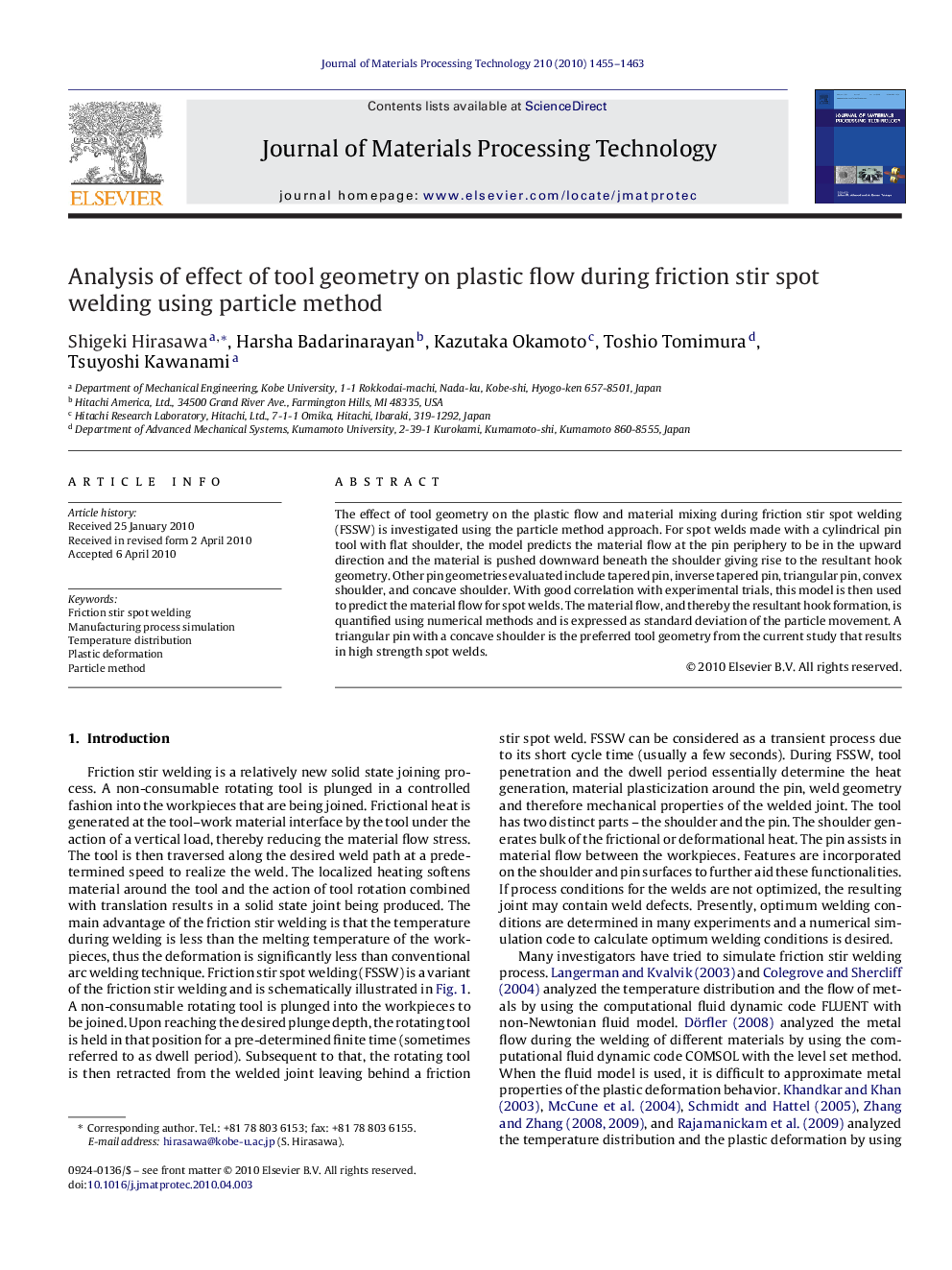| Article ID | Journal | Published Year | Pages | File Type |
|---|---|---|---|---|
| 796065 | Journal of Materials Processing Technology | 2010 | 9 Pages |
The effect of tool geometry on the plastic flow and material mixing during friction stir spot welding (FSSW) is investigated using the particle method approach. For spot welds made with a cylindrical pin tool with flat shoulder, the model predicts the material flow at the pin periphery to be in the upward direction and the material is pushed downward beneath the shoulder giving rise to the resultant hook geometry. Other pin geometries evaluated include tapered pin, inverse tapered pin, triangular pin, convex shoulder, and concave shoulder. With good correlation with experimental trials, this model is then used to predict the material flow for spot welds. The material flow, and thereby the resultant hook formation, is quantified using numerical methods and is expressed as standard deviation of the particle movement. A triangular pin with a concave shoulder is the preferred tool geometry from the current study that results in high strength spot welds.
